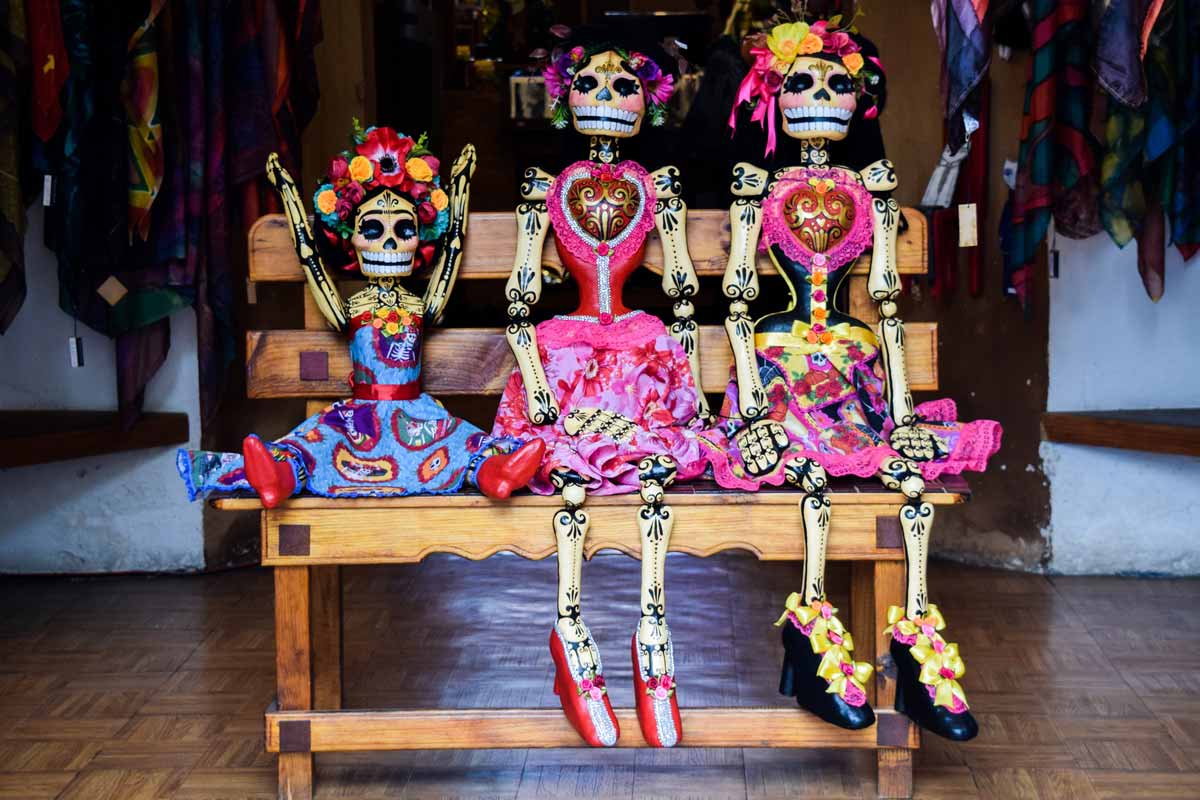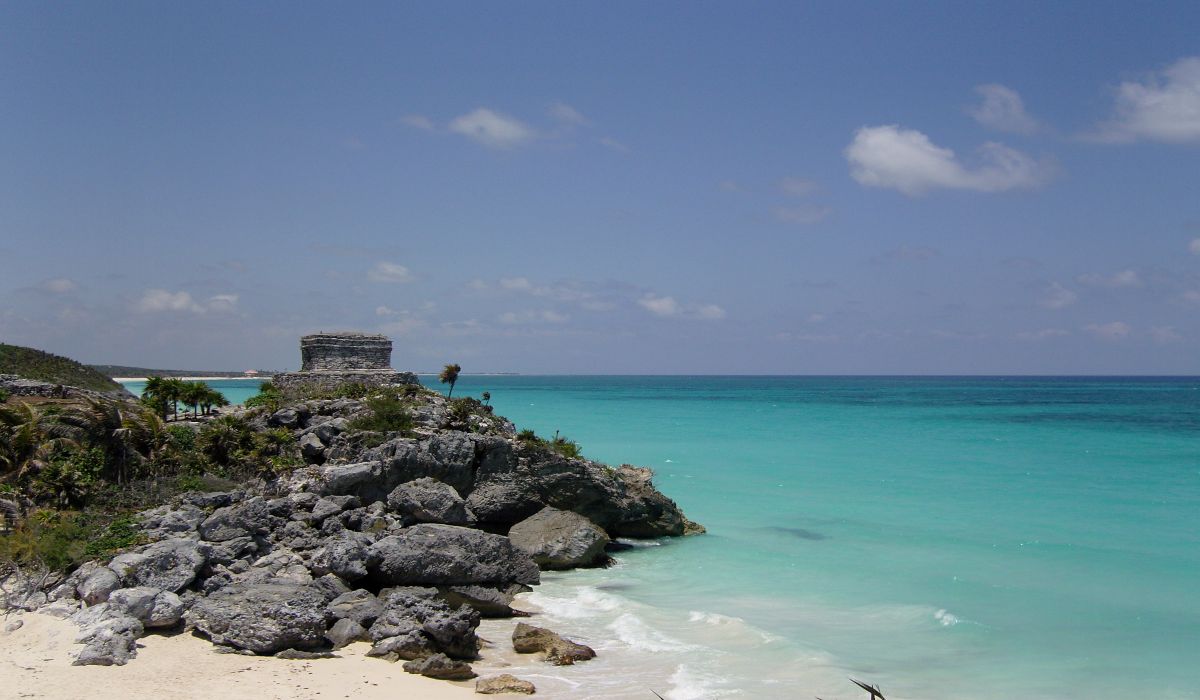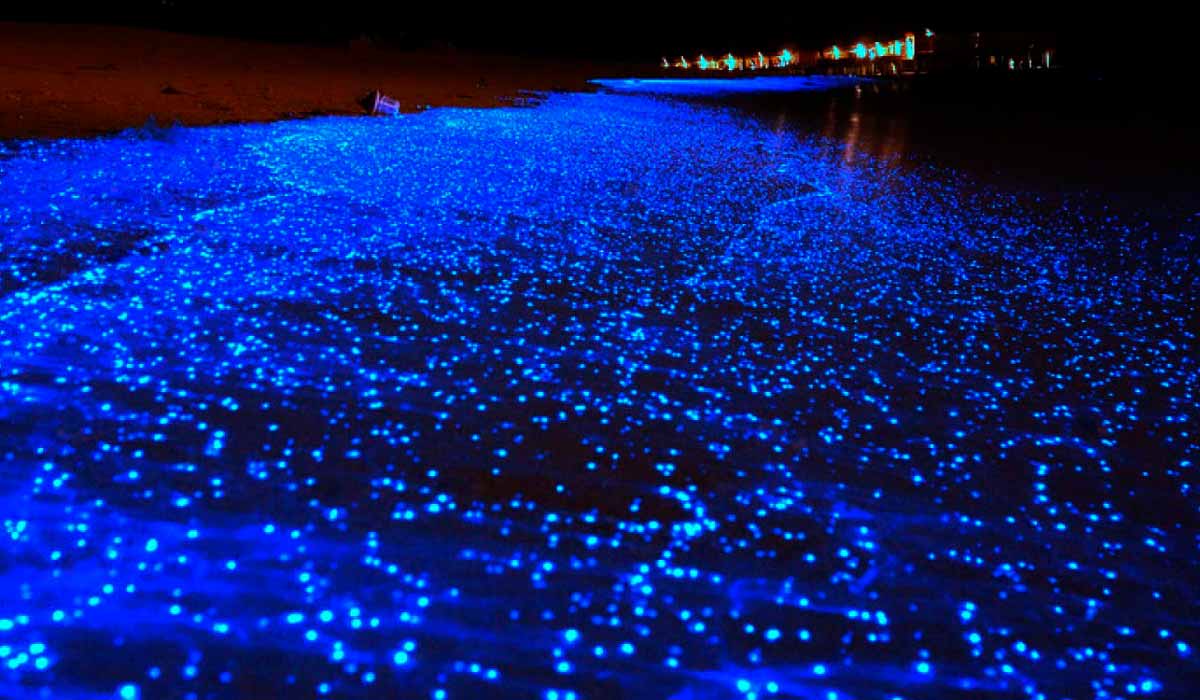This post is also available in:
 Español
Español
This past 31st of October we told you about the best destinations to celebrate Halloween in Latin America, and we mentioned that, traditionally, Latin Americans celebrated the Day of the Dead (el Día de Muertos, in Spanish) instead. Well, today we’re going to tell you all you need to know about this very special celebration in Mexico, from the origins and traditions to where to go if you happen to be in Mexico for this holiday.
Day of the Dead origin in Mexico
The Day of the Dead is a long standing tradition dating from the prehispanic times, and it was meant as a way to face death. Death was a very important part of life in Mesoamerican cultures, defined by the way we behaved when we were alive. Death scares us, but the rituals of the Day of the Dead allows us to get closer and celebrate it, laugh about death and dance with it to hide our fear.
As Spanish conquistadors arrived in Mexico, this celebration, like many others, became mixed and adopted catholic elements, like the flower cross.
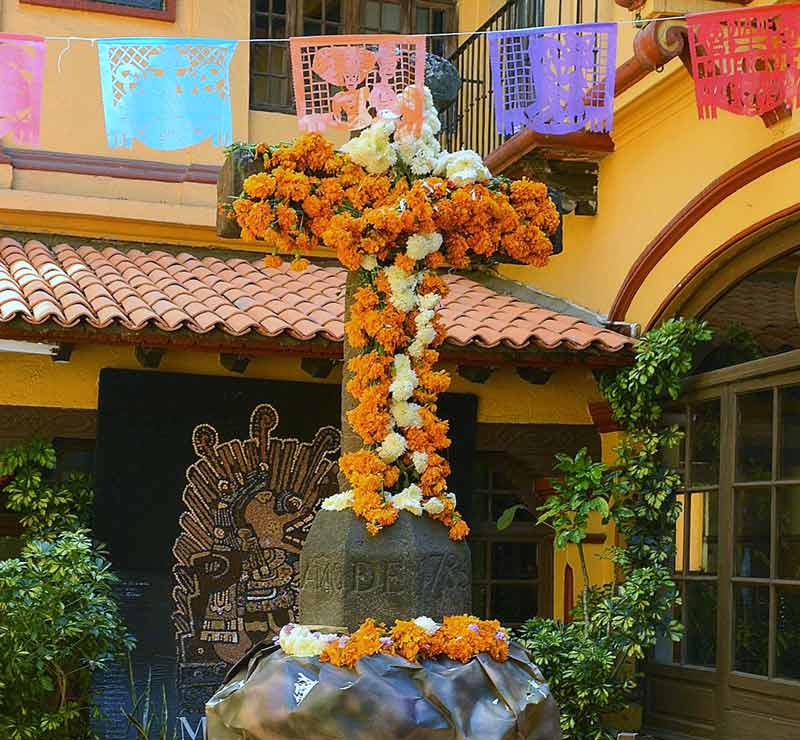
Where to celebrate the Day of the Dead in Mexico
If you’re lucky enough to be travelling to Mexico during the last weeks of October, apart from looking for the must-visit places in Mexico you’re probably also looking for destinations to celebrate the Day of the Dead. Any part of Mexico is good to celebrate this day, but here are some places with very special or striking celebrations.
Todas somos Catrinas in Playa del Carmen, Cancún
When you think about Mexico, one of the first places that come to mind is Cancún, with its crystal clear waters and Mayan cities. But in addition to visiting Tulum or snorkelling in Sian Ka’an, if you’re planning to visit Cancún around the Day of the Dead you’ll be able to visit the Todas somos Catrinas (we’re all catrinas, in English) festival, in Playa del Carmen. In this festival we’ll be able to see beautiful murals and attend workshops and lectures about the Day of the Dead.
Hoctún Cemetery, Yucatán
In Yucatán, very close to Chichén Itzá, we can find Hoctún, a small Mayan community known for its quirky way to celebrate death. Locals meet each year to celebrate the Day of the Dead and, like others all around Mexico, place their altars in the Hoctún cemetery.
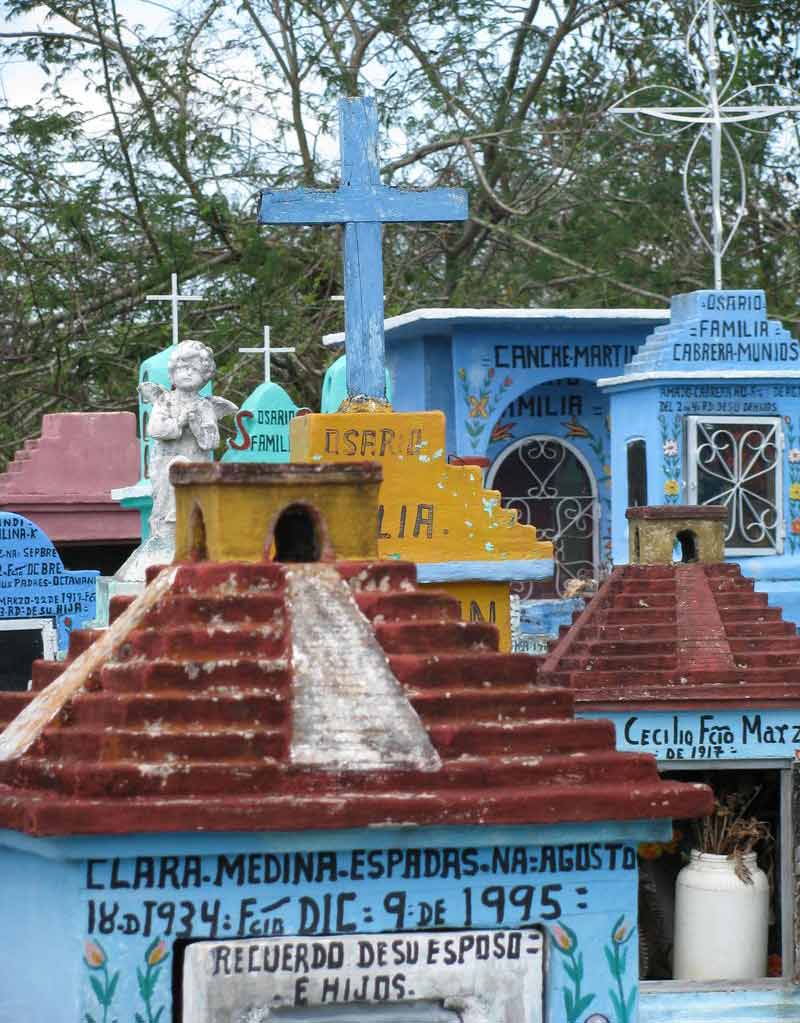
But this is no regular cemetery. Thousands of people visit the Hoctún cemetery to visit the colorful graves, shaped like Mayan houses, milpas, churches, or even landmarks like the Chichén Itzá castle or the Latin American Tower in Mexico City. Each year, the residents of Hoctún come to the cemetery to “dress” their late loved ones, which means they decorate and paint their graves with beautiful motives and bright colors to make sure they’re ready for their visit to the world of the living on the 2nd of November.
Festival de las Calaveras in Aguascalientes
Aguascalientes celebrates each year the ¨Festival de las Calaveras¨ (the Skull Festival, in English), one of the most important festivals of the region. During the last week of October and first week of November, visitors can attend skull parades, visit artisanal expositions, taste local gastronomy and even watch living altars. A very special event you cannot miss if you’re near Aguascalientes on these dates.
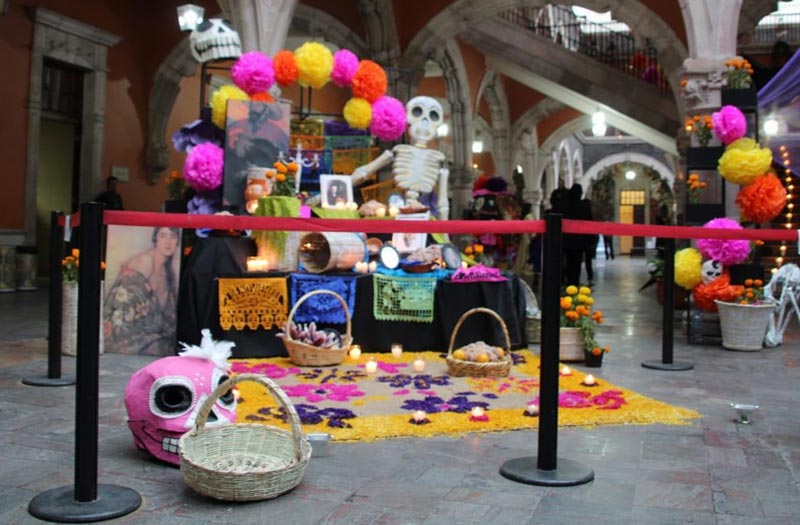
Day of the Death traditions in Mexico
Altars
On this day, Mexicans visit their loved ones who’ve passed away in cemeteries and prepare them altars with food, drinks, candles and pictures to remember them, and even add some personal objects belonging to the deceased, in addition to religious images and other decorations. One thing that can never be forgotten is the cempasúchil flower, which marks the path back home for the spirits.
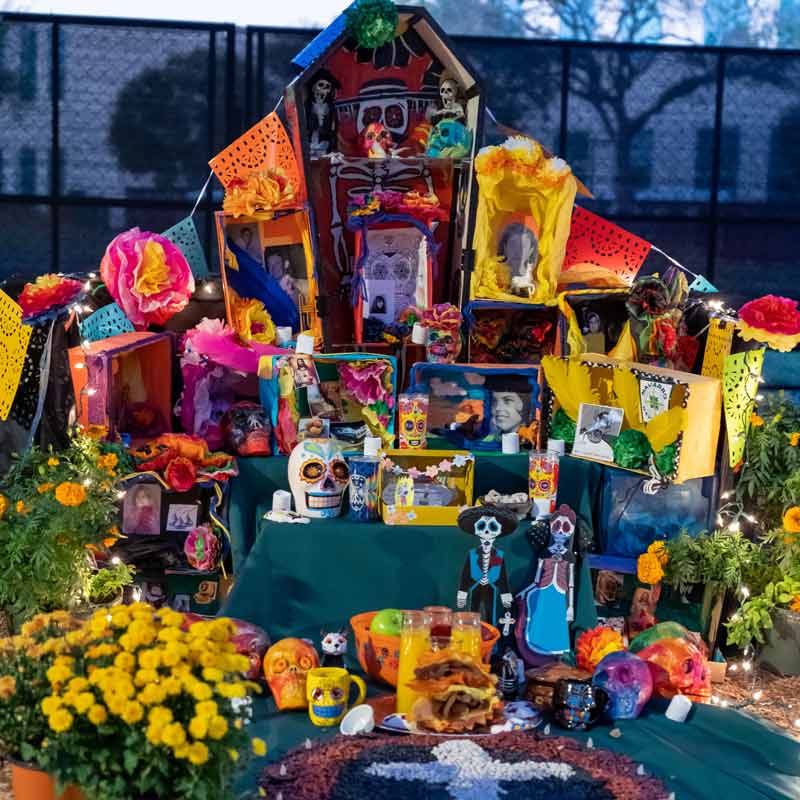
This is a very special day for Mexicans because it’s the only day of the year that their loved ones’ souls can cross the border between the world of the dead and the living, so families try to offer their deceased things they really enjoyed when they were alive so that they have the best possible day together.
The entire family participates in the offerings, and the living wait to eat and drink from the altars until the end of the day so that their late loved ones have enough time to enjoy everything on it before.
Skulls
Skulls are a very important symbol of the Day of the Death. Apart from being present in the traditional decorations of this day, they’re part of this day in other ways:
- Sugar skulls (calaveritas de azúcar in Spanish): sweets shaped like skulls, typically made of a sugar paste although we can also find them made of chocolate, amaranth or other sweet pastes. They’re very common in markets and local shops around October and beginning of November.
- Literary skulls (calaveras literarias in Spanish): comedic epitaphs about living people, that pretend they are dead. Commonly they are about public figures, especially politicians.
- Catrina (or catrín, for males): this creation by José Guadalupe Posadas is one of the most recognizable symbols of the Day of the Dead, although it wasn’t created for this day especifically. It’s a skeleton wearing a big hat and a flamboyant dress, and originally was meant to symbolize the upper class.
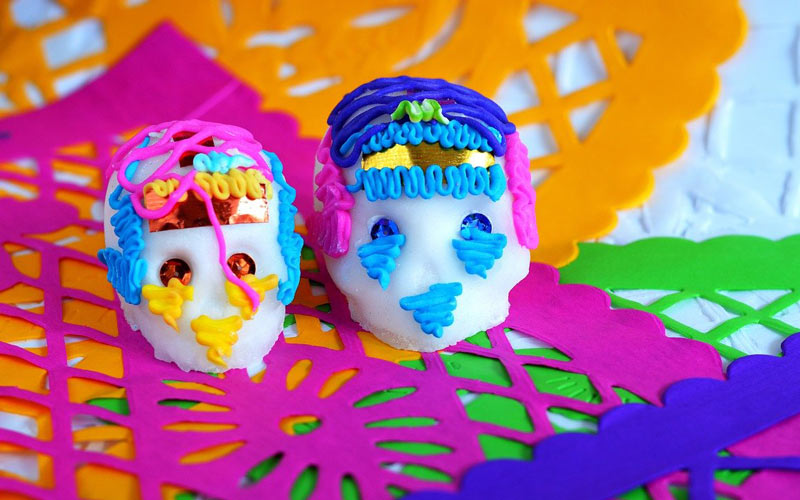

Day of the Dead makeup and costumes
Since the Day of the Dead is a magical day where the world of the living mixes up with the beyond, a lot of Mexicans decide to do their makeup and even dress up as a catrín or catrina, to make sure they can mix up with the dead in case they need to. If you want to do your makeup too, here’s a handy tutorial:
There’s also many other costumes Mexicans wear for the celebrations. Here are some of the most common ones:
- El Santo (The Saint, in English): one of the best known Mexican luchadores (similar to wrestlers). Plus, it’s very easy to dress up as El Santo; you only need a luchador mask.
- Frida Kahlo: a well-known Mexican artist, and a feminist icon. To become Frida Kahlo, you’ll only need to draw on a unibrow with a black eyeliner, put on some red lipstick and wear the biggest flower crown you can find (or make).
- El charro negro (the black horseman, because of his dark clothing, in English): a folkflore Mexican legend, brings the Day of the Dead and the mariachi traditions together.
- La llorona (the crier, in English): another popular Mexican legend, and easy to do; you only need a white dress and veil.
We hope this post helped you to better understand this very special celebration and it inspires you for your next trip, whenever they might be.
What about you, did you already know this Mexican tradition? How do you celebrate this day?

